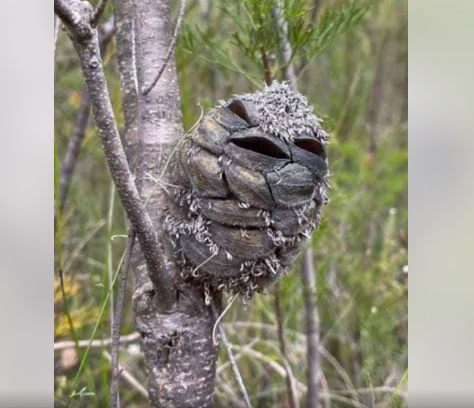Nature doesn’t just inspire awe—it often humbles us, too. On a quiet walk through the Australian bush, photographer Kym Beechey expected to find peace and maybe a few birds to photograph. Instead, she stumbled onto a moment that blended humor with wonder. What she thought was a baby bird turned out to be something completely different—and oddly beautiful in its own right.
From a distance, the shape on the branch was unmistakable: wide-eyed, fluffy, and perched just right. Convinced she’d found a baby tawny frogmouth, Kym raised her phone and zoomed in, ready to capture its charm. But what filled the screen wasn’t feathers or eyes—it was wood and whimsy. The “bird” was actually a banksia pod, a native plant known for its unusual, face-like patterns.
Kym couldn’t help but laugh. How could something so clearly not alive look so real, so animated? She posted the photo online, and within hours, it struck a chord with thousands of others. Some laughed, others admitted they would’ve been fooled too. It was a shared moment of humility—proof that our minds often fill in the blanks with what we hope or expect to see.
More than just a funny optical illusion, the moment held a quiet lesson: things are not always what they seem, especially in nature. Sometimes, slowing down and looking twice reveals the truth—and even when it isn’t what we imagined, it can still be beautiful. And perhaps, that’s the real magic in seeing the world with open eyes.
